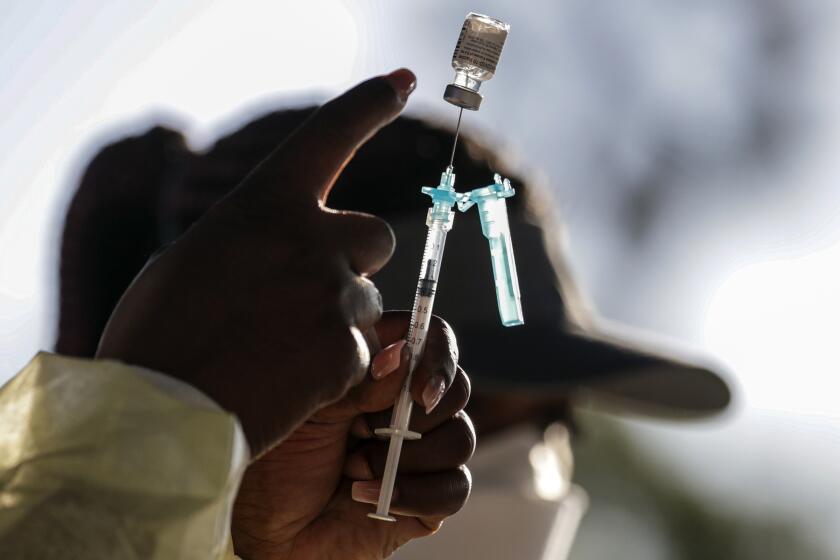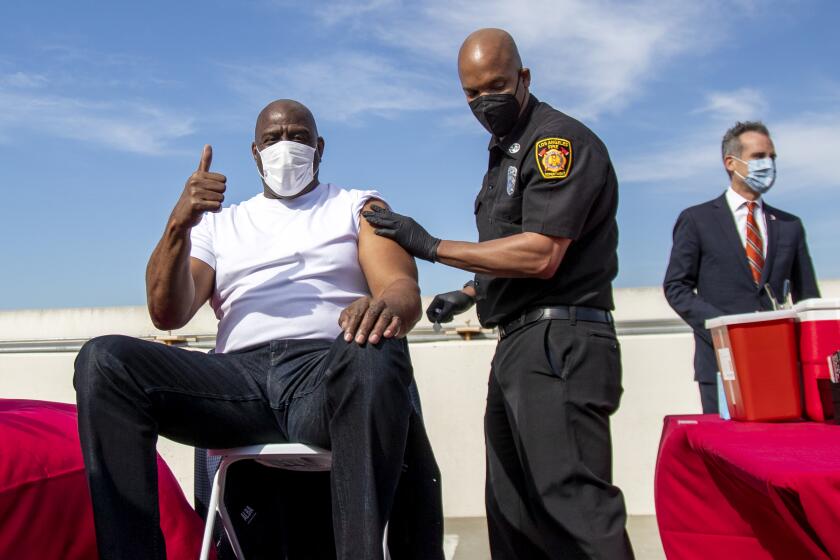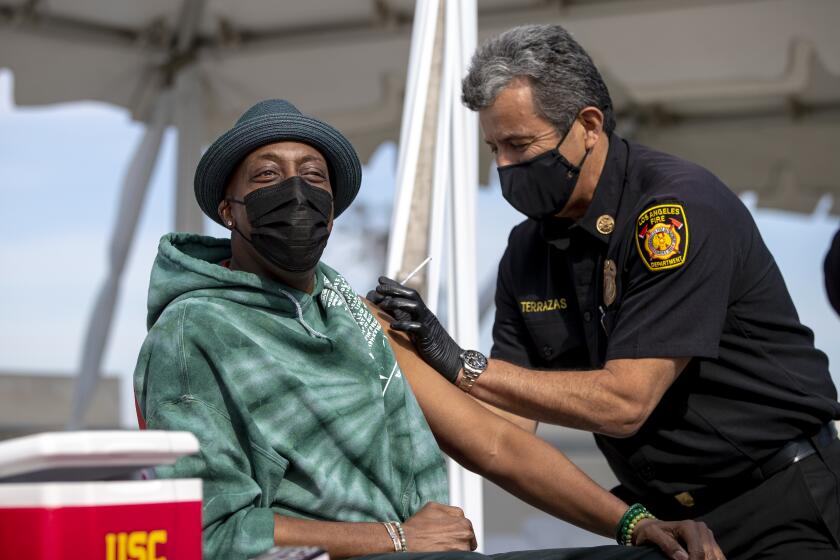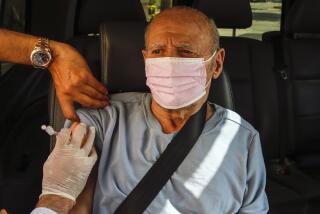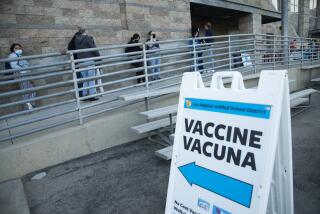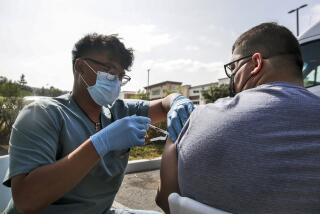With a big boost coming in the COVID-19 vaccine supply, California expands eligibility
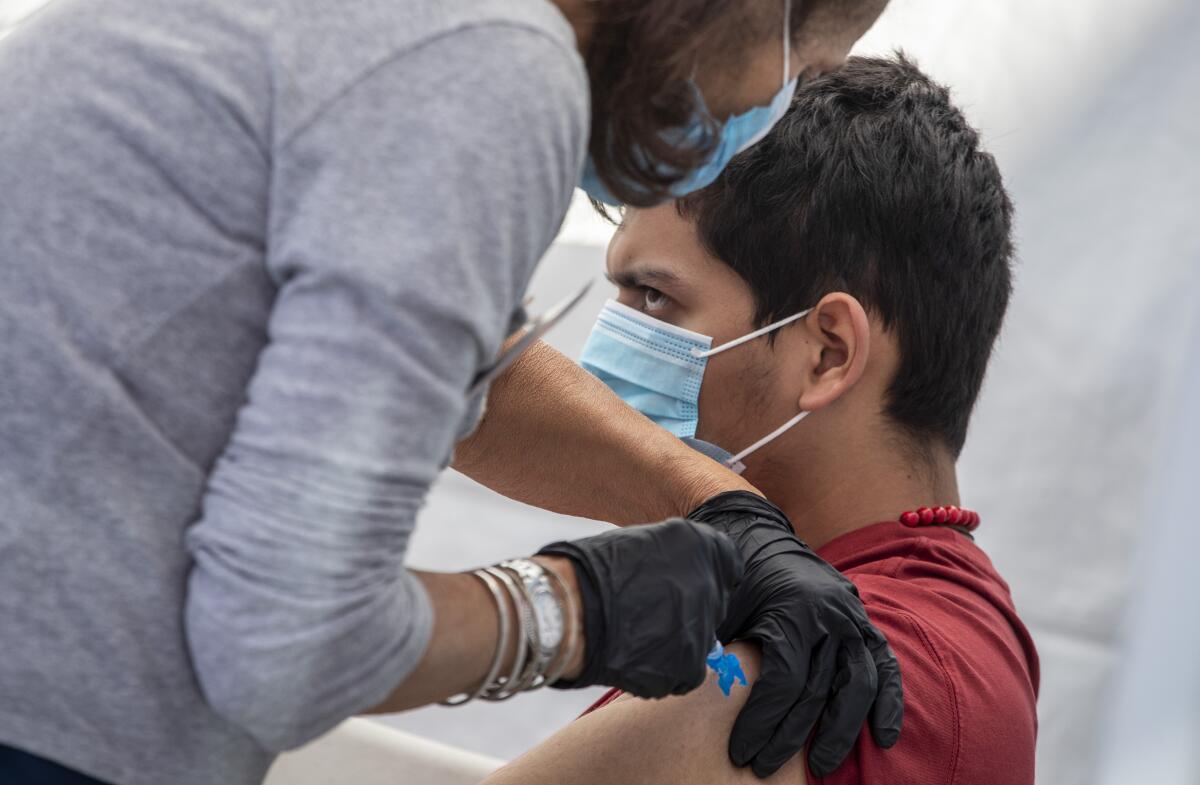
Federal officials are expecting a major influx of the Johnson & Johnson COVID-19 vaccine, providing a shot in the arm to nationwide supply as a number of states — including California — prepare to make appointments more widely available to adults.
Somewhere in the neighborhood of 11 million Johnson & Johnson doses are expected to be delivered next week, a huge number compared with what’s been shipped to date, according to Jeff Zients, coordinator of President Biden’s COVID-19 task force.
“The company has said they’ll deliver the 20 million [doses] by the end of March,” he said during a briefing Friday, referencing a public production target. “And, from our conversations with the company, they are on track to meet that goal with at least 11 million doses delivered next week.”
As soon as those doses become available to the federal government, he added, “we will, in turn, make them available for delivery to our state, local and federal partners.”
Johnson & Johnson, he pointed out, “is still in its earlier stages of manufacturing” compared to the other available vaccines from Pfizer-BioNTech and Moderna, “and will achieve, across time, a more regular weekly cadence.”
Starting April 15, all Californians 16 and older will be eligible for a shot. Here are the basics and info on getting your shot.
It’s unclear how many of those additional doses would flow to California, but any significant uptick has the potential to greatly accelerate the state’s vaccine rollout.
While the Pfizer-BioNTech and Moderna vaccines both require two doses — administered three and four weeks apart, respectively — Johnson & Johnson entails only one.
Despite the vaccine’s promise, its administration has been slowed so far by production issues.
As of Friday morning, 589,300 Johnson & Johnson doses had been delivered to California and 279,788 had been administered, according to data from the U.S. Centers for Disease Control and Prevention.
Nationwide, a little more than 2.7 million people have been fully inoculated using the Johnson & Johnson vaccine, which is also referred to as Janssen.
We traveled around the L.A. region to ask people whether or not they would take the vaccine, and if not, why. Then we posed their questions to two experts. Here’s what they said.
California officials foreshadowed the boost in supply Thursday in announcing an imminent and dramatic expansion of the state’s vaccine eligibility.
Residents who are at least 50 years old can get vaccines starting Thursday, and all Californians 16 and older will be eligible starting April 15.
Gov. Gavin Newsom said the decision to throw the doors open for widespread access was based on expected increases in vaccine supply — including doses of Johnson & Johnson.
“Our ability to do more has always been constrained by supply, manufactured supply,” he said during a news conference in Santa Ana. “We have confidence, now, of the manufactured supply becoming available sooner than we had anticipated.”
Recently, California has received only about 1.8 million total COVID-19 vaccine doses a week. But officials said the state expects to be allocated about 2.5 million doses per week over the first half of April — with that number growing to more than 3 million doses later in the month.
Even with shipments of that size, however, officials warn that it will likely take months to provide a vaccine to every Californian who wants one.
Nevertheless, Newsom said the near-term prospect of universal adult eligibility shows that “there’s not just light at the end of the tunnel; there’s bright light at the end of the tunnel” when it comes to the coronavirus pandemic.
To date, providers throughout California have administered almost 16 million total doses, and 27.2% of residents have gotten at least one shot, according to data compiled by The Times.
Over the last week, an average of 371,008 shots per day have been doled out statewide.
Receiving significantly more doses is one thing, but being able to handle them is another.
Across a wide web of providers that includes local public health departments, pharmacies, care consortiums and other qualified health centers, California has now achieved its target of being able to administer 4 million doses a week, according to Blue Shield of California, which the state has retained to manage its vaccine network.
“We can handle more than that, frankly,” Blue Shield President Paul Markovich said in an interview Friday.
He said that capacity includes all of the providers who have signed contracts to be part of the statewide vaccine network.
“There’s another 3 million of capacity out there that may ultimately get contracted and brought on board,” he said. “So there’s a lot of capacity out there to administer the vaccine.”
As of Friday, 20 counties had agreed to be part of that statewide network, according to a spokesperson for the state public health department. And Markovich said “we are on track” to have the remaining counties sign on.
The California Department of Public Health says residents can go through their doctor’s office to begin booking their shots or through the state’s My Turn scheduling site.
Almost half of all Californians are already eligible for the vaccine. That includes adults 65 and older, healthcare workers, educators, people who are incarcerated or living in homeless shelters, essential workers such as those in the food industry or emergency services, public transit workers and janitors, and residents 16 and older who have certain disabilities or underlying health conditions.
Even with widespread eligibility just weeks away, though, some providers are moving quicker than the state’s timeline.
Officials in the city of Long Beach, which has its own health department, opened vaccine eligibility this Thursday to city residents who are at least 50 years old.
At least four California counties have likewise already lowered the age threshold to 50, and one dropped it to 45. Some counties have further expanded eligibility to health conditions beyond the state’s specifications.
Times staff writers Melody Gutierrez, Colleen Shalby and Laura J. Nelson contributed to this report.
More to Read
Sign up for Essential California
The most important California stories and recommendations in your inbox every morning.
You may occasionally receive promotional content from the Los Angeles Times.
